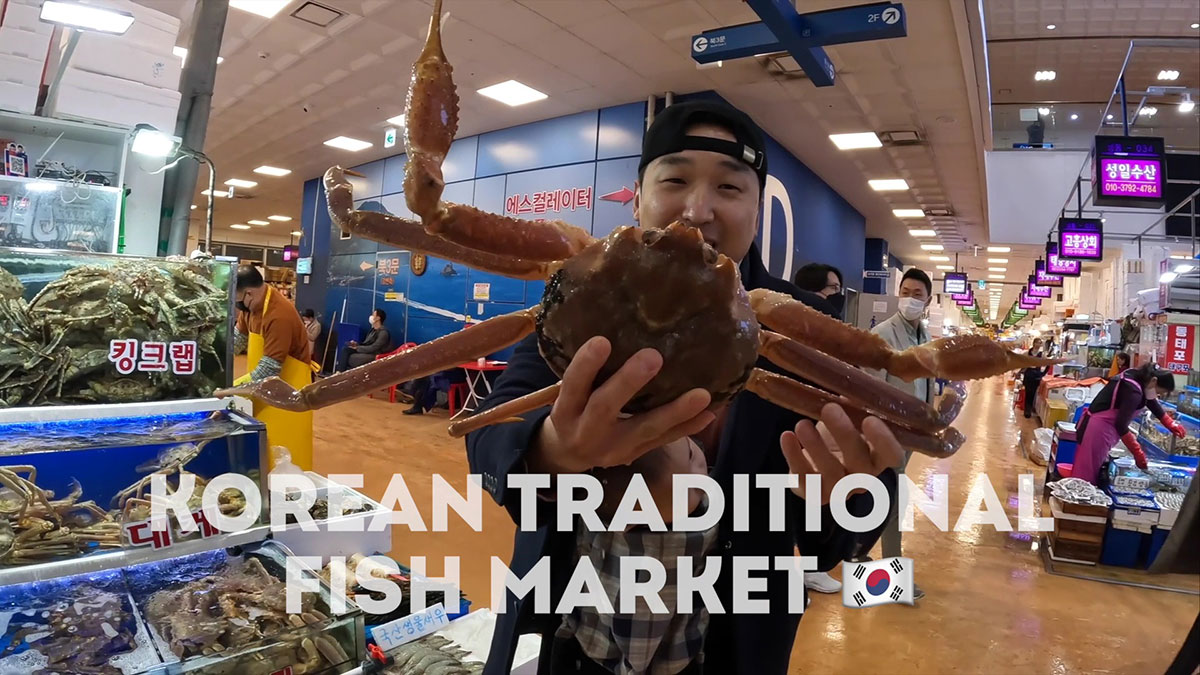
Noryangjin Fisheries Wholesale Market
674, Nodeul-ro, Dongjak-gu, Seoul, Korea
Noryangjin Fish Market is the oldest and largest seafood market in South Korea. The building houses 700 vendors and deals 250 to 300 tons of seafood every day, so you know this is the real deal. Despite being a local market huge in trading, this is one of my favorite places to go when I’m in Korea.
What sets this apart from other fish markets is that everything is literally fresh. Usually, you would need to go to fish markets early in the morning to get the freshest catch, but almost everything is alive here. You can basically come any time of the day and you still get the best quality seafood.
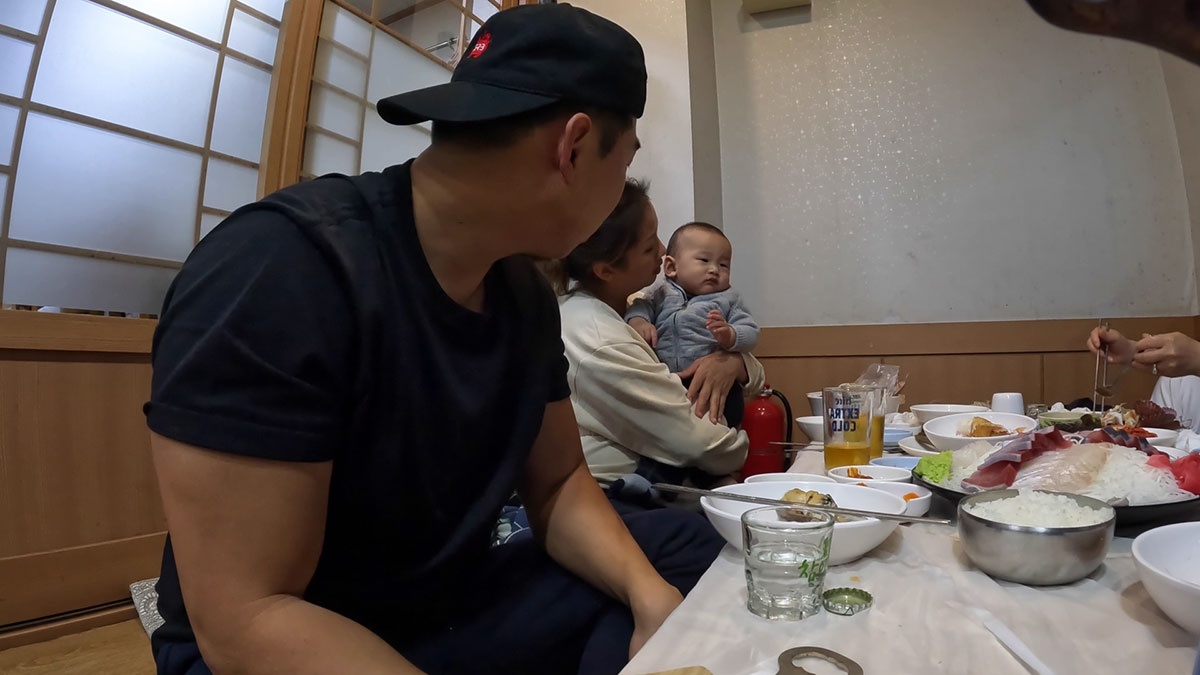
I would usually go here with my friends, but this is the first time I went with my family. My wife was so amazed by everything that she saw!
Before Going, Be Prepared!
In preparation to go to the fish market, you have to consider your outfit, know what to expect, and of course, know the prices.
Before anything else, this is a wet market and it’s literally wet. The floor is damp and there can be fish blood on the floor, so make sure to use closed shoes that can keep you from getting wet feet. Wear comfortably as well because you’ll get down on a lot of seafood on the day of your visit, for sure!!
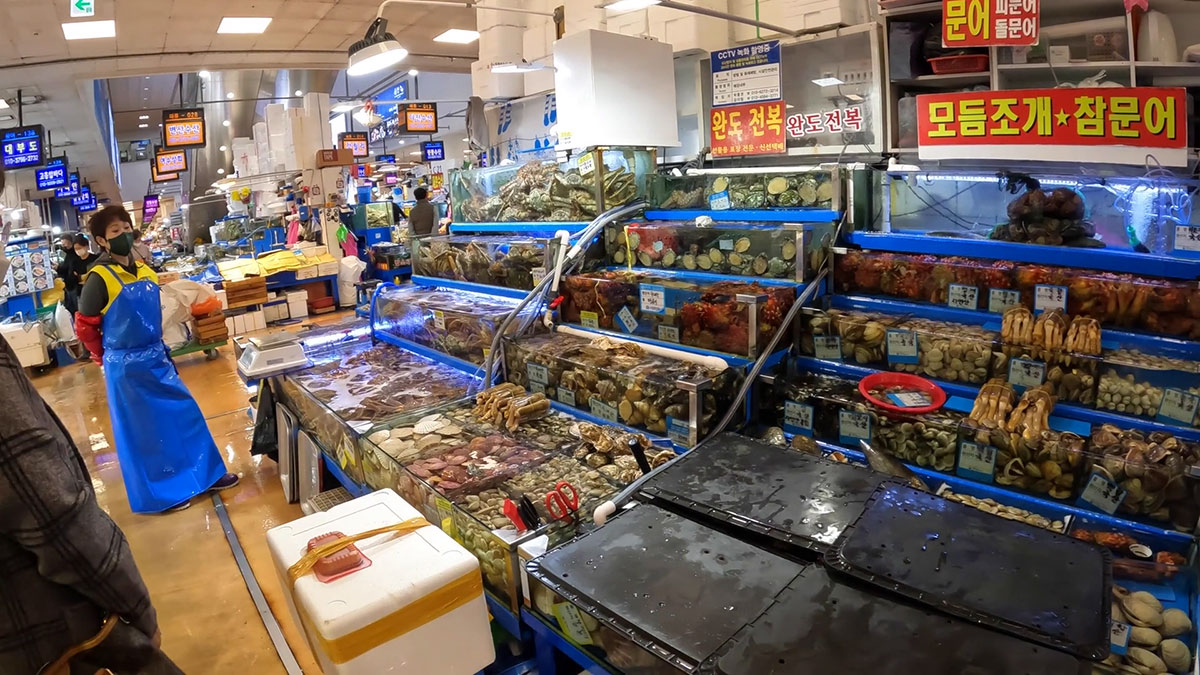
When you’re there and you really want to get the best prices and value for money, make sure to visit their website for baseline prices. You can then compare once you get there.
The fish market houses a wide range of seafood from King Crabs, Lobsters, Abalone, different types of shellfish, different types of fish, and salted and dried fish items. It’s basically open 24/7, especially for the high-class fish. For any changes in shop schedules, check out VisitKorea website to know more.
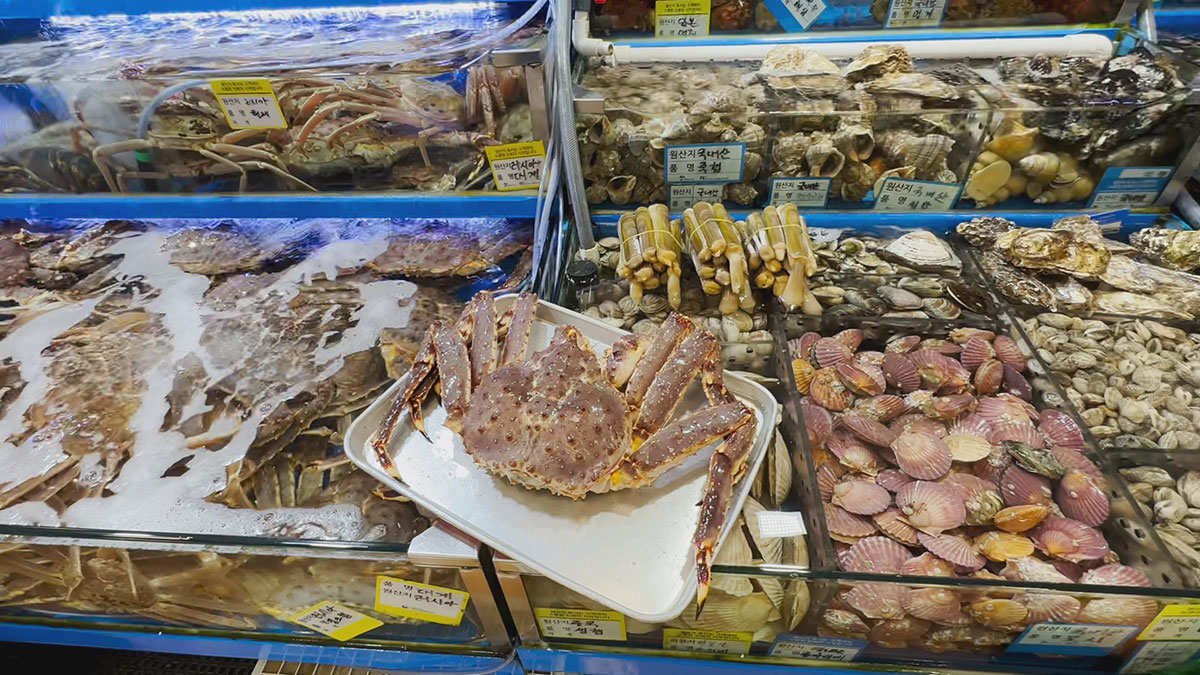
The Old & New Building of Noryangjin Fish Market
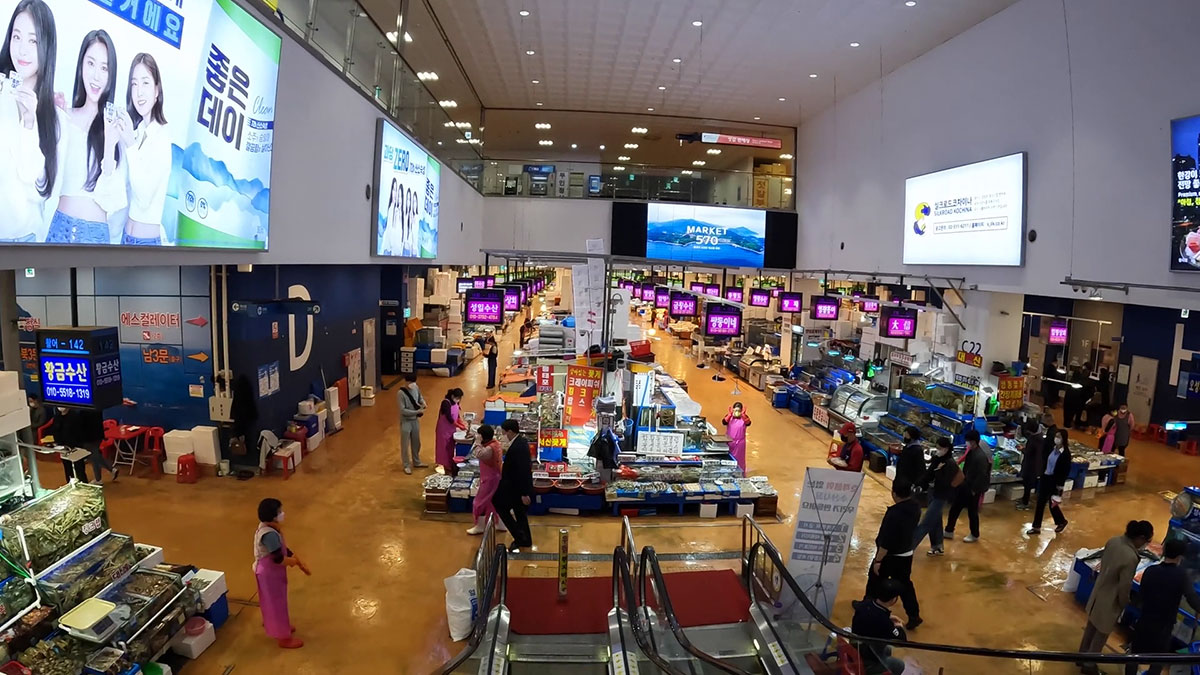
In going to Noryangjin Fish Market, make sure to go to the Noryangjin Station (Seoul Subway Line 1) and go to Exit 1. It’s about 100m walk over the bridge to get there. Bus routes are also available, do check the VisitKorea website for more info.
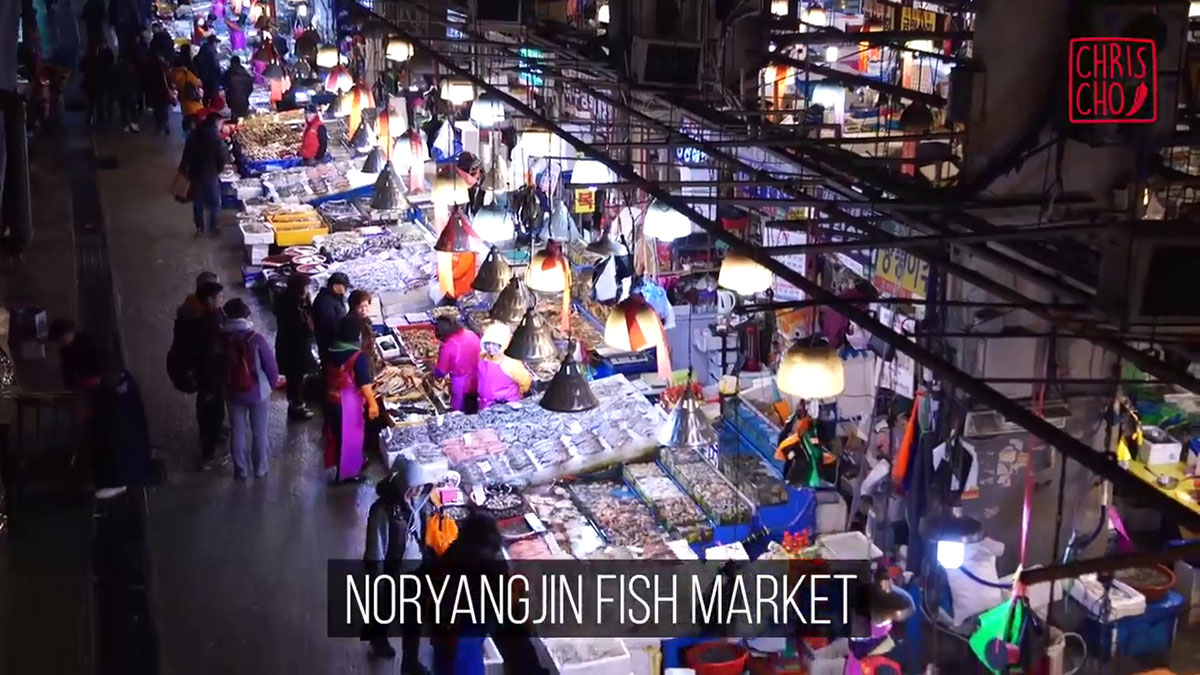
We first got lost because the fish market has been transferred to a new building. The old one used to be open but cramped and chaotic, with all the haggling sounds left and right, but that was the place that I fell in love with. I loved the sound of the hustle and grind through the air. Nevertheless, the new building made it cleaner and gave it a better system.
Explore & Haggle!
When you get to the fish market, it can be overwhelming since it’s so big and there are so many options available. But if you’ve prepared just like I told you, you can start exploring the different sections until you get a hang of the best items with the best prices to get them.
Few tips as you buy:

- Sellers can get a bit competitive to get you to buy. As long as you got a fair knowledge of the items and prices you want to buy, you can haggle. It is expected here!
- Don’t be afraid to walk away when you are given an unreasonable price. It’s your right and they won’t take it personally!
- Do remember that there are items that are naturally expensive, but still worth the experience. Be adventurous for a bit!
- This is a wholesale market, so generally, they can also lower the price if you buy more. If not, they give items like a couple of shrimp or oysters as a freebie for buying. Be nice!
- As you walk around, you’ll definitely be amazed at the sights. Don’t play with the seafood if you won’t be buying. That’s rude!
- Even if you don’t speak Korean, if you know how to spot seafood and are prepared with the price points, you can negotiate using a calculator. The sellers are generally nice and they can communicate back for the prices. Haggle away!
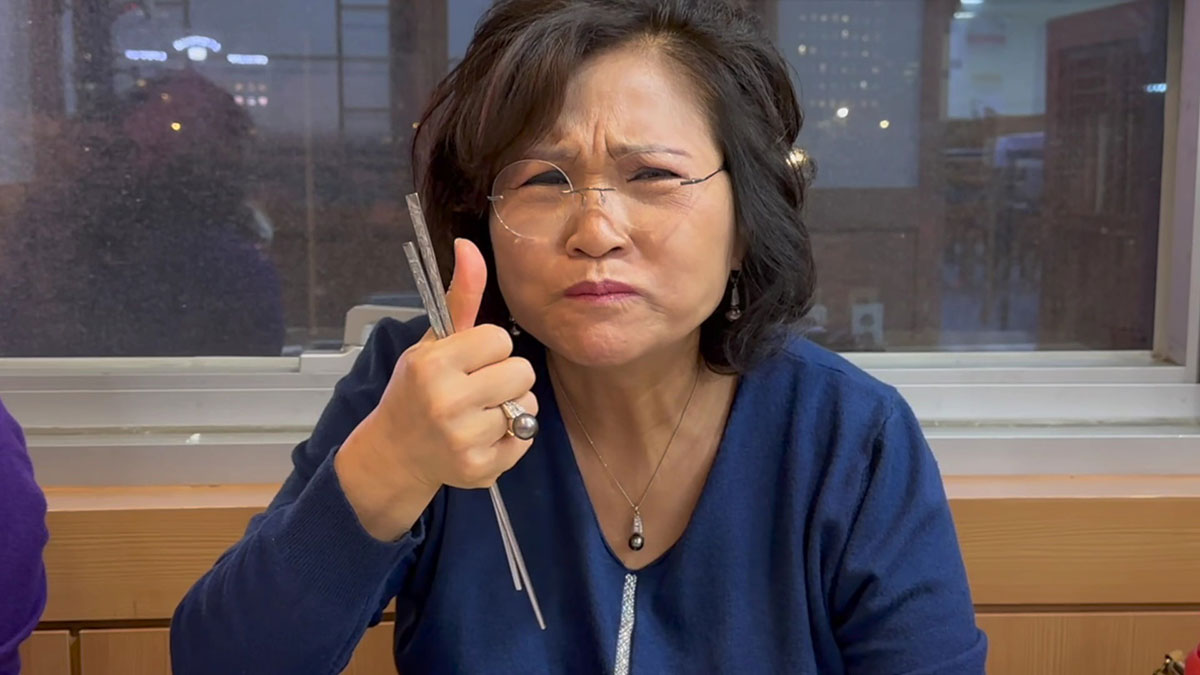
I used to do all the negotiation when I was with my friends, but since Mama Cho was here, the OG hustler did the job!
Getting Your Seafood Cooked Up
After buying all the seafood, the next step is to go to the restaurants upstairs and get it cooked up. Usually, the stalls downstairs have partner restaurants upstairs. A representative from the shop would then lead you where to go. Once you get to the restaurant, they’ll ask you how you want the seafood to be cooked up (steamed, grilled, raw, etc), but sometimes they already have a recommended way of doing it.
For this step, you need to be alert and quick to understand what’s happening. There is a lot of $$ involved, you have to know who to follow, and you have to do your best to communicate how you want the seafood to be done. I don’t think this is foreigner-friendly because of everything that’s happening all at once, but if you want the ultimate experience, then go give this a try! Be ready to eat anything if in any case there are mistranslations along the way~
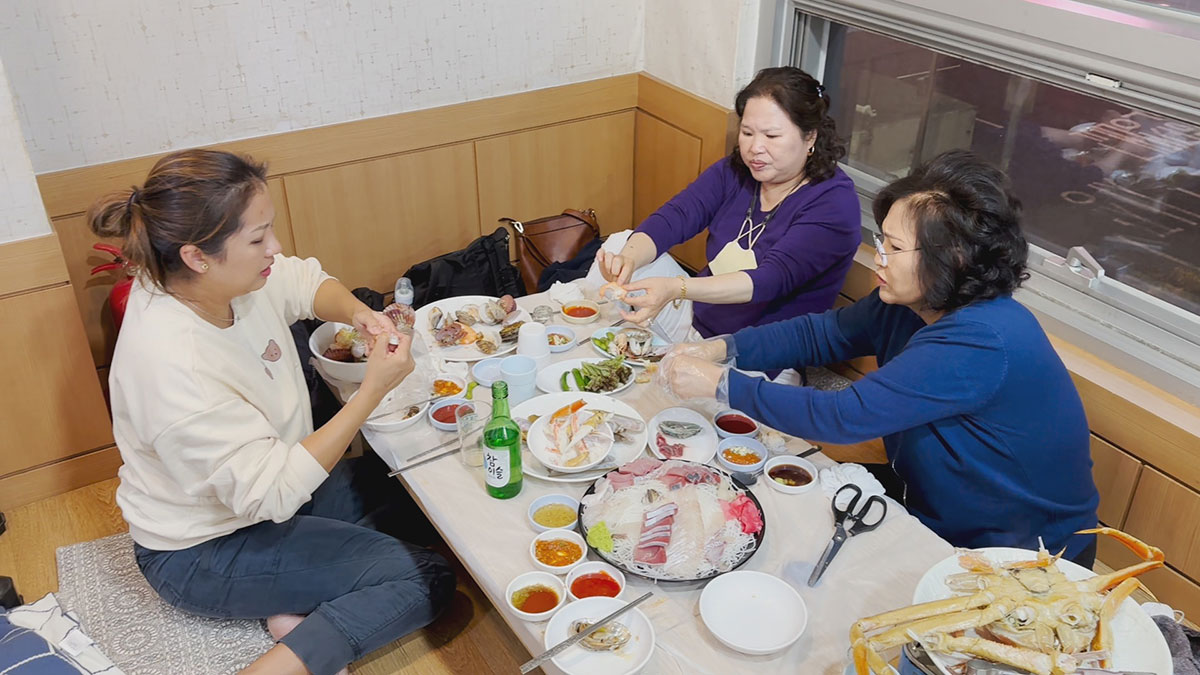
TIP #1: There will be a lot of back and forth in the process. If it’s possible, come with a local or join a tour so you can communicate better with the sellers and the restaurant!
TIP #2: The fish market tends to be busier on the weekends, so try to come on the weekdays so there will be fewer people and less pressure in getting your requests done.
TIP #3: If you want to skip the damp market and all the haggling, you can go straight to the restaurants and order. They will still serve fresh seafood. But really, half the experience is downstairs, why miss it?
Personal Favorites:
This place is perfect for people who love seafood. To be honest, despite all the exotic foods available here, you don’t need to go crazy and try everything, just be open to trying new ones, if not, get your favorites in their freshest form.
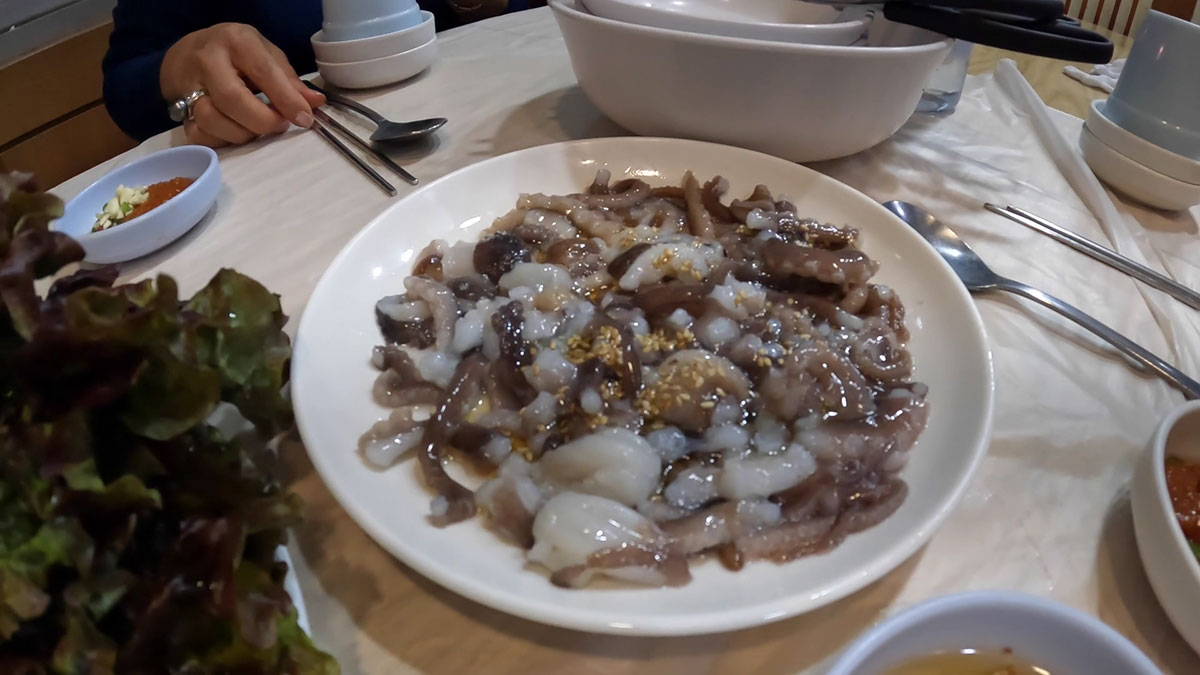
On top of the list is San Nakji or Live Octopus. Disclaimer to everyone, they are basically dead after being chopped off the head. The tentacles are just reacting to salt and other seasoning it’s put in.
I personally love it because of the freshness and how it is seasoned. If you wanna try it out, make sure to dip it in sesame oil and chew it thoroughly. The tentacles can be sticky but the oil should help them slide and the chewing will help the other nerves to stop reacting.
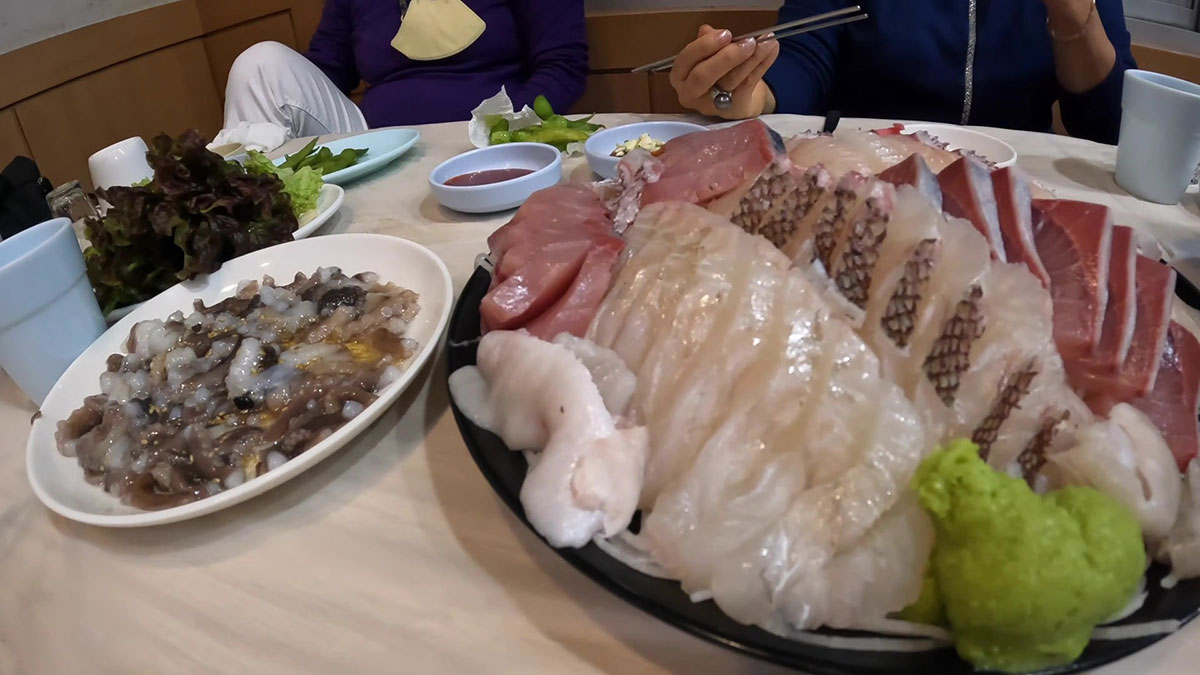
My second favorite would be Hwe or Korean Sashimi. There isn’t really much difference when it comes to Japanese Sashimi. It can also be different fishes, but here we got the yellow tail, snapper, and halibut. It is also freshly prepared right in front of you just like Omakase. All these were firm and had a fresh seafood taste, so so love it!
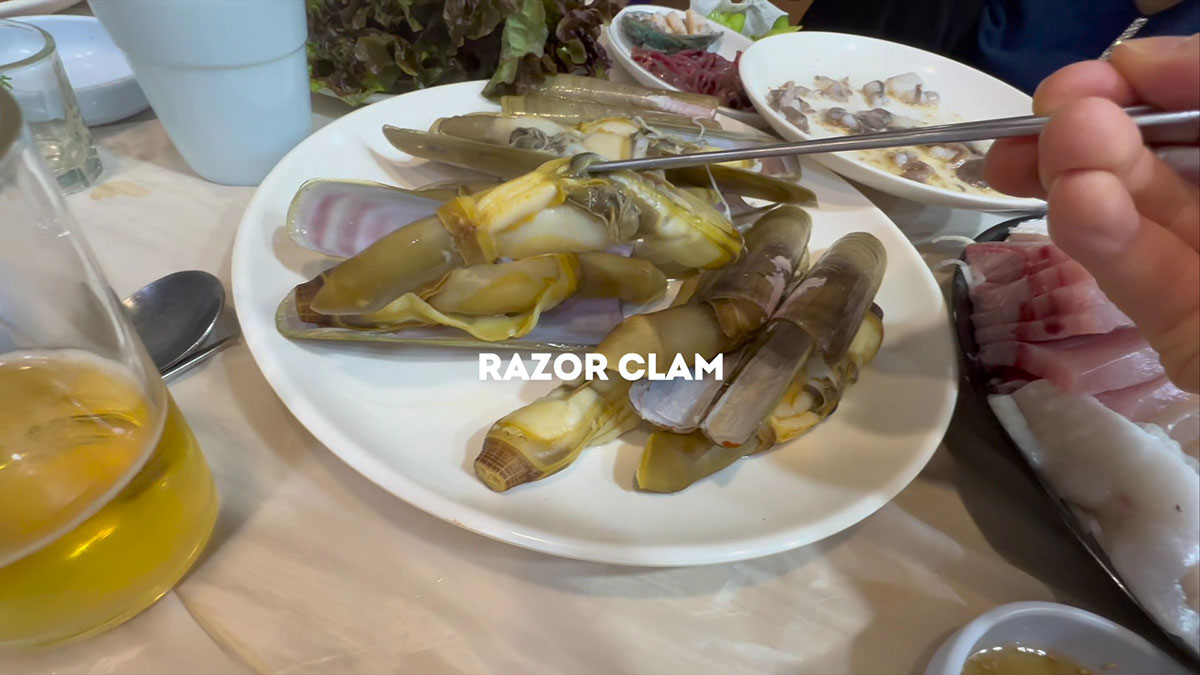
My third favorite are these razor clams! This type of shellfish is not really common elsewhere but in Korea. It’s salty and fishy which perfectly goes with the sweet gochujang sauce. It’s big and it’s firm so you get a lot more from it than a typical shellfish. Oooh!
Other Items We Got:
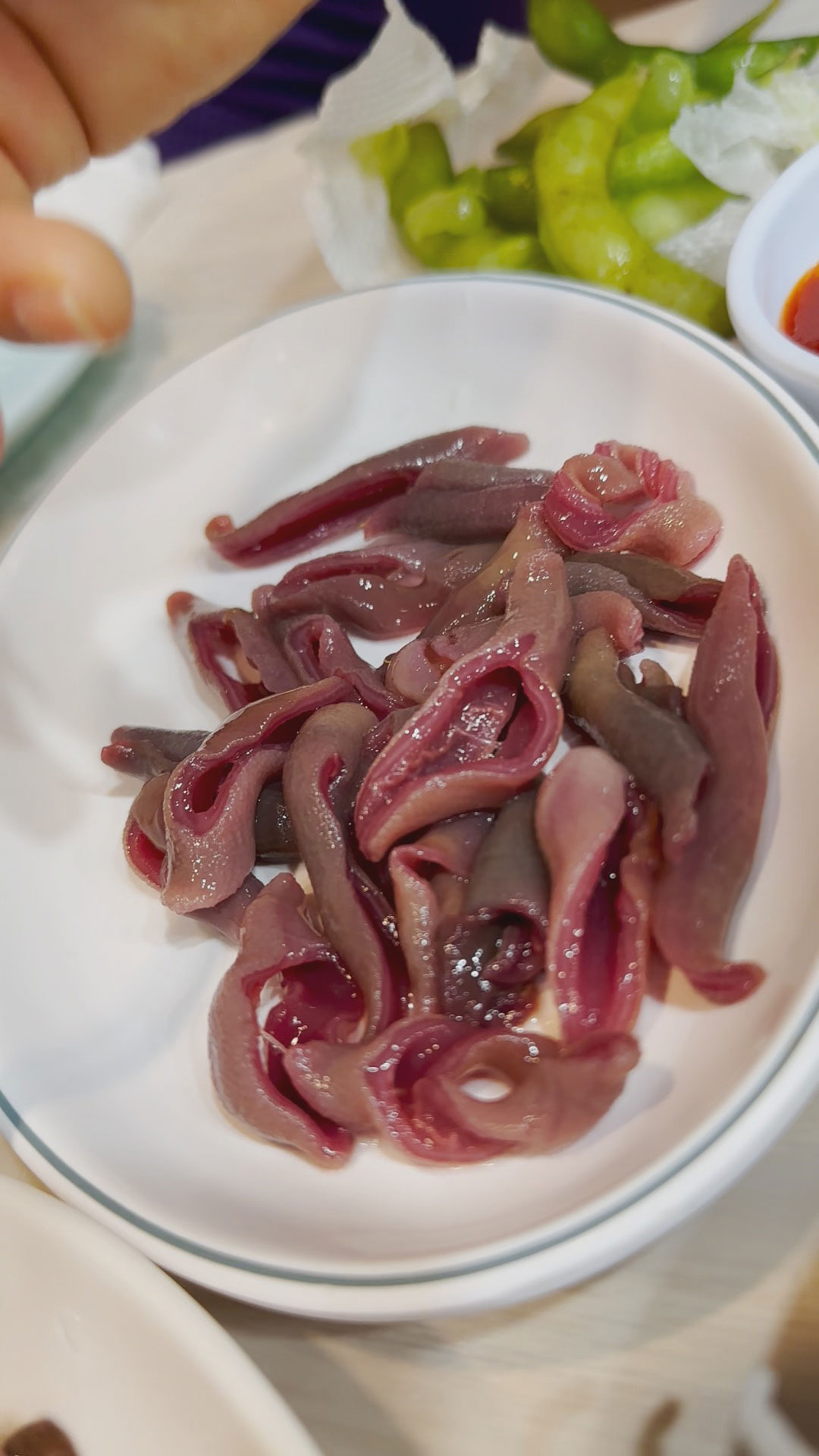
Live Spoon Worm, dip into gochujang or ssam sauce, and eat raw. Give this a try!

Shellfish Platter (Steamed), deshell, dip in gochujang or ssam sauce, and eat away! So fresh!
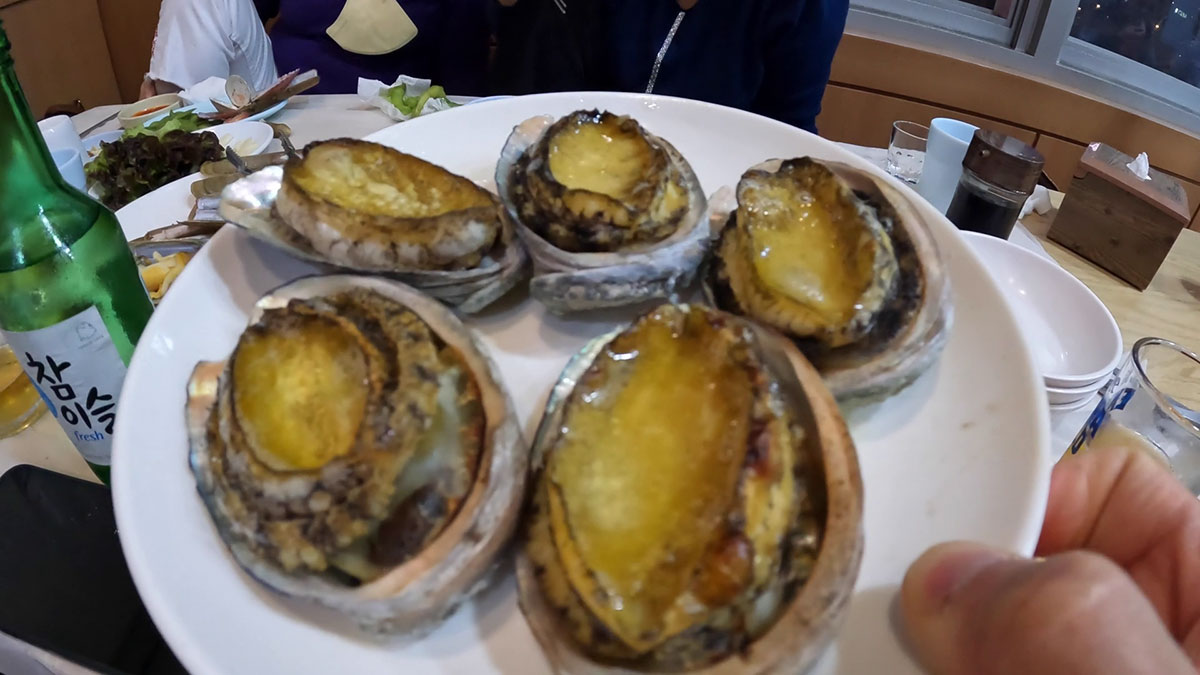
Abalone (Grilled), deshell, cut into bite-size pieces, and eat away! This was sooooo goooood!
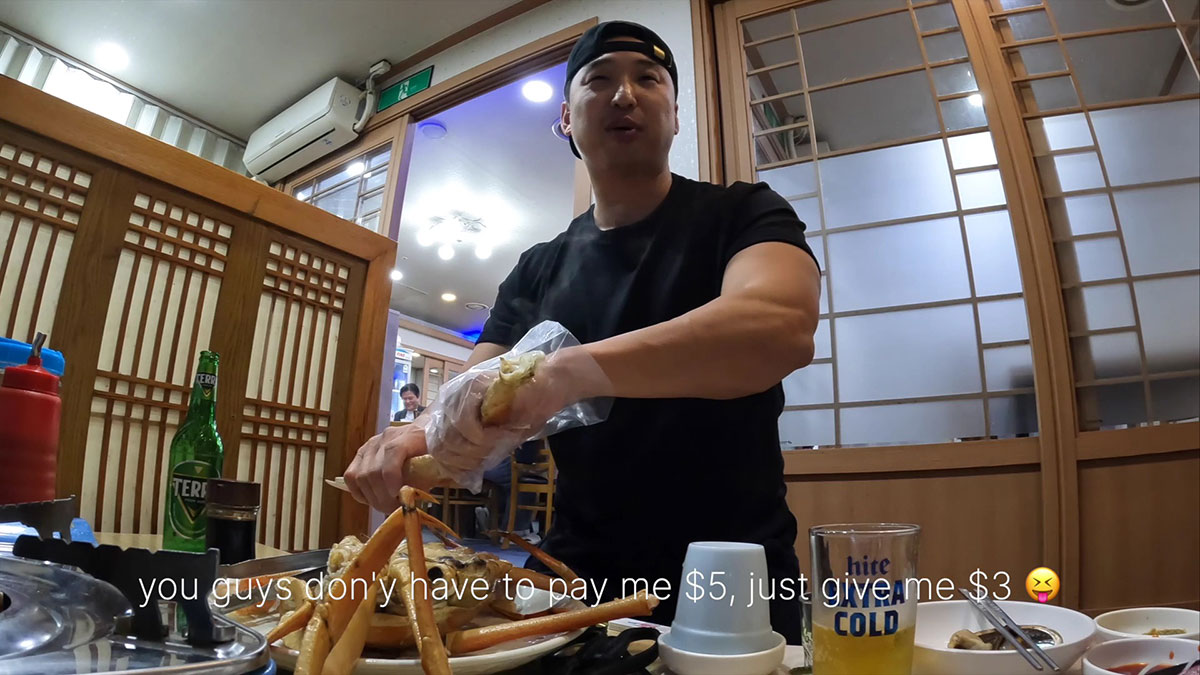
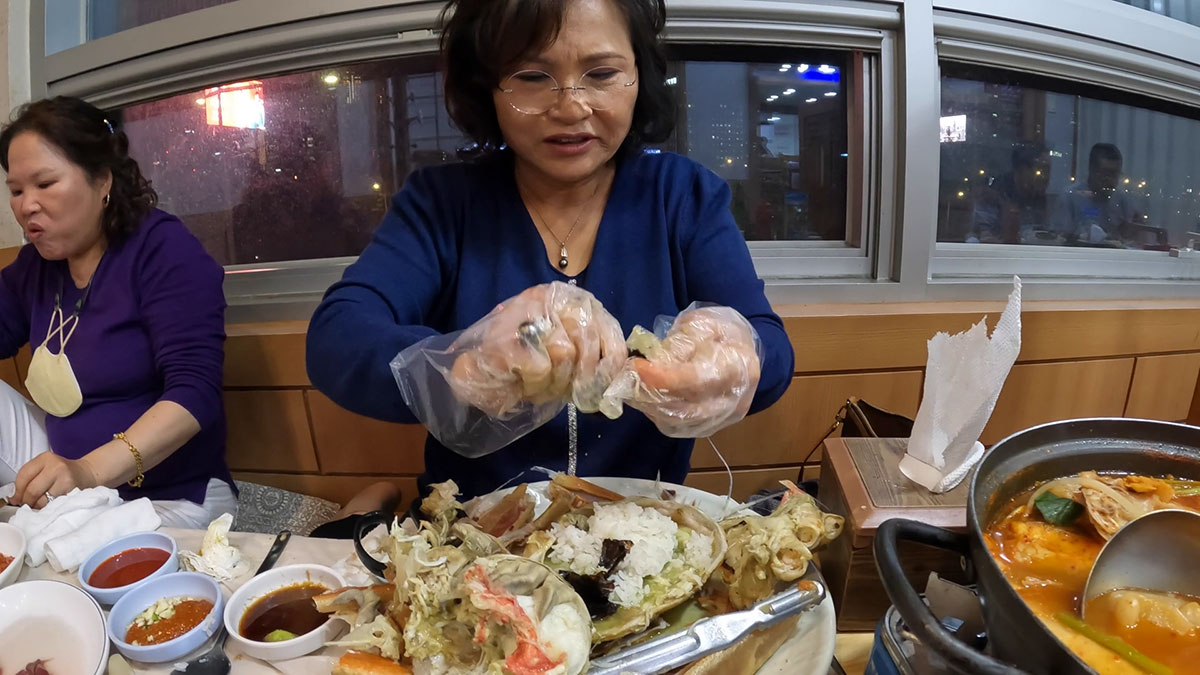
King Crab (Steamed), crack each leg open, and down the packed crabmeat. I tried to do it myself, but I don’t think I did a good job. Mama Cho to the rescue though, she even made crab rice from the crab drippings. Wifey loved this so much!
The Whole Noryangjin Fish Market Experience
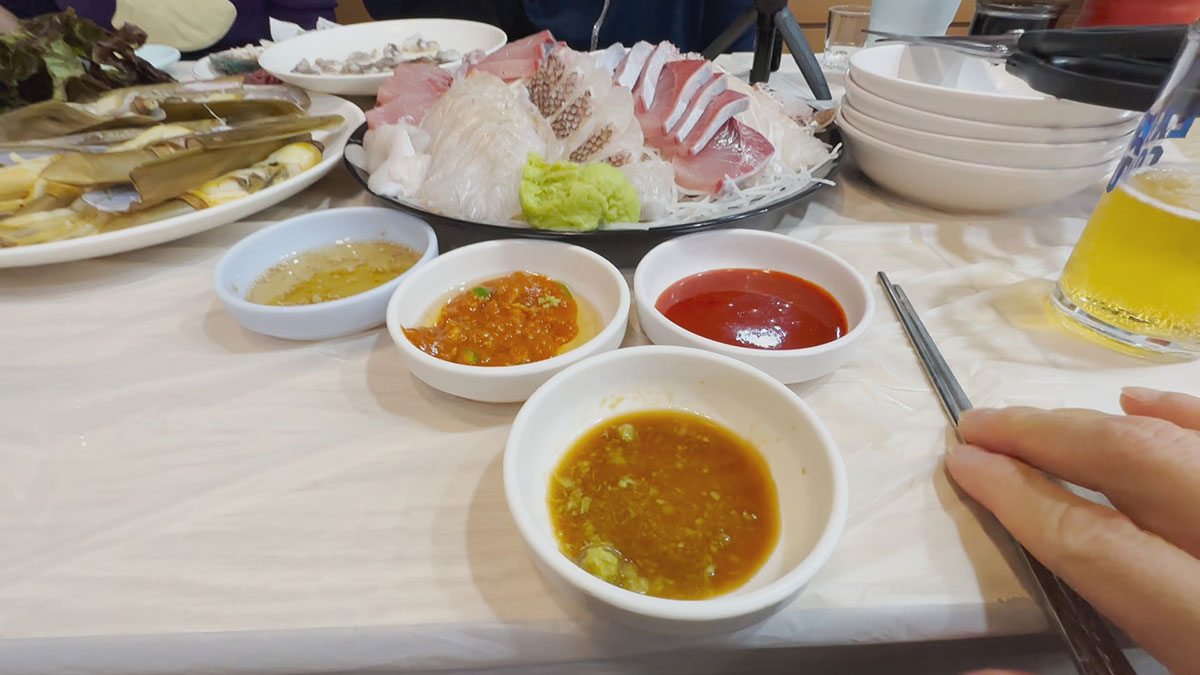
With all the seafood, what I love about doing it in Korean style is the sauces. You can have it with sesame oil, sweet gochujang sauce, savory ssam sauce, or soy sauce with spicy wasabi. The sky is the limit and the flavor pairings are amazing!
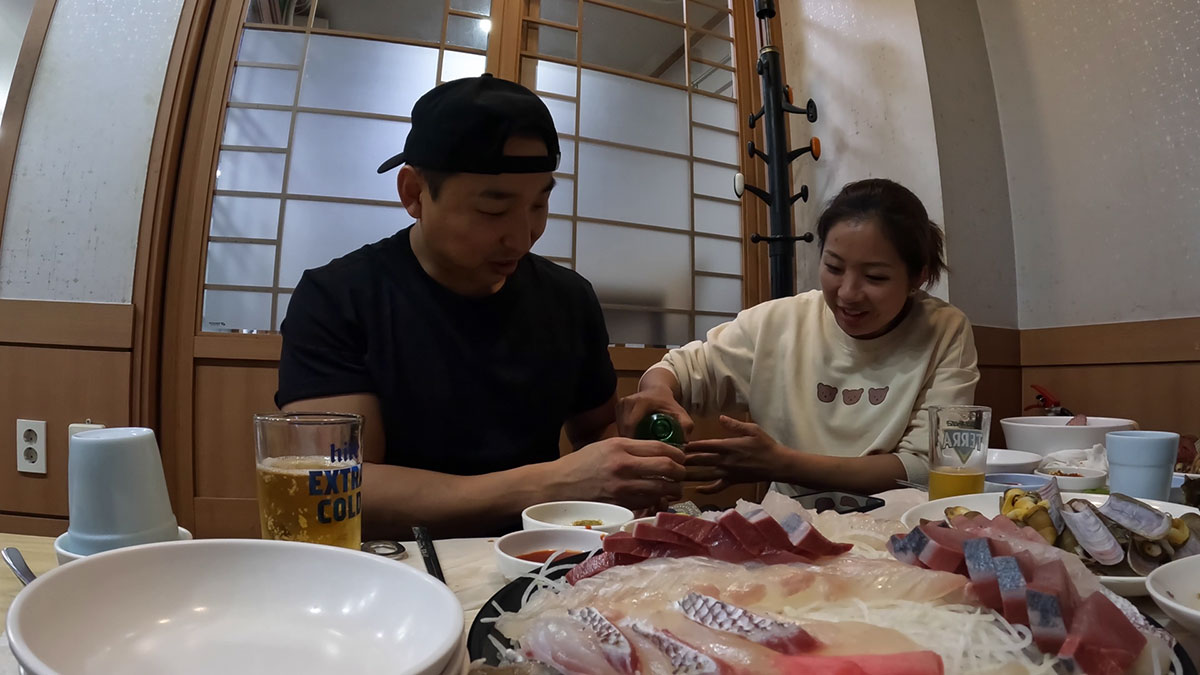
Of course, no Korean-style food trippings would be complete without maejku (beer) or soju. Cheers to good food and food life, always!
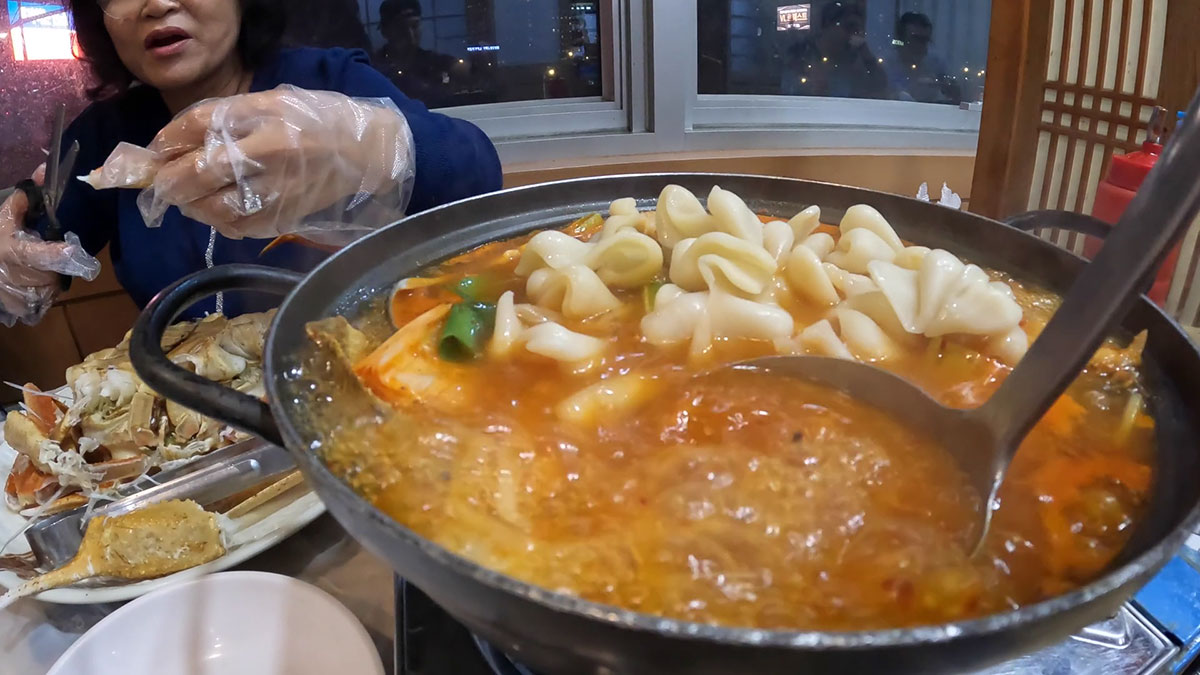
To finish off, restaurants would usually make Maeuntang or a spicy soup out of the fishbones from the sashimi. This is how we cap a great long meal!
And to sum up everything, we spent about 200,000W ($160) in the market and 99,000W ($70) in the restaurant. Yep, they’re paid separately! All in all, we spend around 300,000W ($230) for a full seafood feast for 4 people, do you think it was worth it??
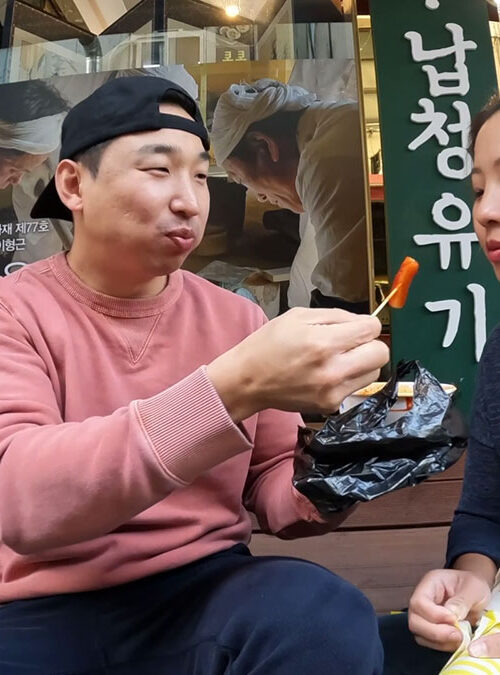
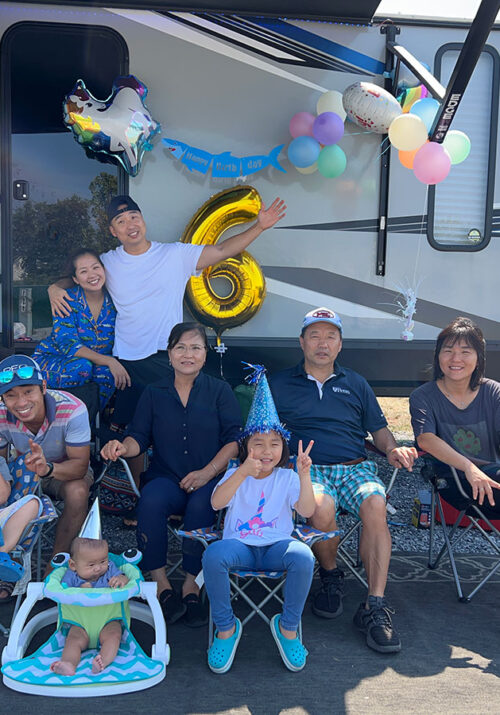
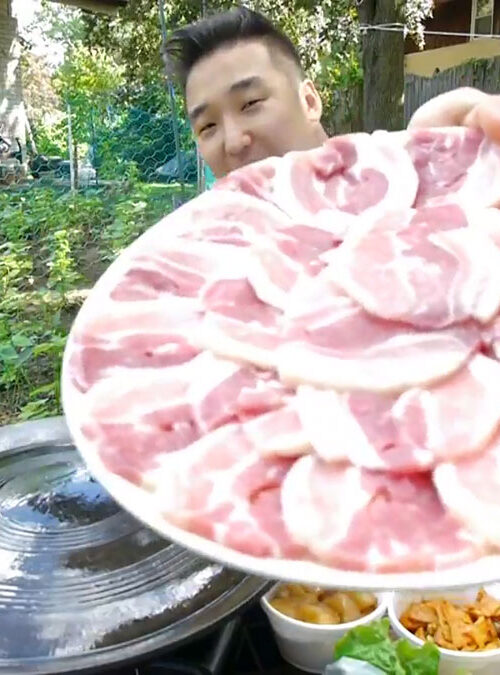


Correct.
Thanks